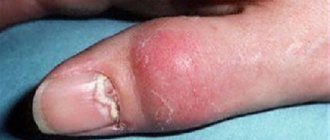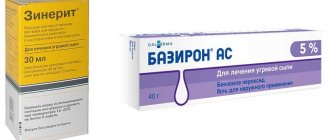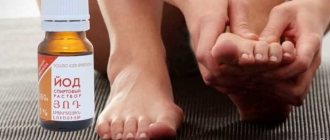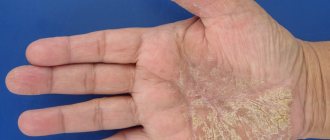Clotrimazole is a broad-spectrum antimycotic or antifungal agent. The antimycotic properties of clotrimazole were discovered in the late 1960s. The drug belongs to the category of imidazole azole antifungals. It is available in a variety of dosage forms, including creams, ointments, tablets, and slow-dissolving capsules.
Clotrimazole may be used to treat anemia
In addition to its antifungal activity, clotrimazole has become a drug of interest for the treatment of a number of other diseases, such as sickle cell disease, malaria and some types of cancer. This drug's minimal side effects and uncomplicated metabolic profile have led to its widespread use for the treatment of fungal outbreaks, such as vaginal infections caused by yeast spores (candida vulvitis or thrush), as well as athlete's foot.
Compound
Gel 1% contains the active substance clotrimazole at a concentration of 10 mg/g and auxiliary components: propylene glycol, macrogol 400, carbomer, rectified ethyl alcohol 96% from food raw materials, glycerol, sage ethereal extract.
The 1% cream contains the active ingredient clotrimazole at a concentration of 10 mg/g and auxiliary components: cetostearyl and benzyl alcohols, polysorbate 60, synthetic spermaceti, octyldodecanol, sorbitan stearate, water.
The 1% ointment contains the active ingredient clotrimazole at a concentration of 10 mg/g and auxiliary components: polyethylene oxides 400 and 1500, propylene glycol, methylparaben, nipagin.
The 1% solution contains the active ingredient clotrimazole at a concentration of 10 mg/ml (in terms of dry matter) and auxiliary components: polyethylene glycol 400, propylene glycol, ethanol 96%.
1 suppository (candle) contains 100 mg of the active ingredient clotrimazole and semi-synthetic glycerides in the volume required to obtain a suppository weighing 2 g.
The tablets contain 100, 200 or 500 mg of the active ingredient clotrimazole and auxiliary components: lactose in the form of monohydrate, potato starch, adipic acid, sodium bicarbonate, silicon dioxide in colloidal form, sodium lauryl sulfate.
Release form
- gel 1% (pack of 20 and 40 g);
- cream 1% (tubes 15, 20, 30 and 50 g);
- ointment 1% (tubes 15, 20, 30 and 40 g);
- 1% solution (15 ml bottles);
- vaginal suppositories 0.1 g (package No. 6);
- vaginal tablets 0.1, 0.2 or 0.5 g (packaging No. 1, No. 3, No. 6; tablets are equipped with an applicator).
Clotrimazole can also be produced in the form of granules, powder for external use, or spray.
The drug is intended for local (including intravaginal) and external use; tablets for oral administration are not available.
Pharmacodynamics and pharmacokinetics
Clotrimazole is an imidazole .
In vitro, it exhibits high activity against the most pathogenic fungi that can cause serious infectious complications, namely:
- dermatophytes (Microsporum sp., Epidermophyton floccosum, Trichophyton sp.);
- yeast-like fungi (Cryptococcus neoformans, Candida sp.);
- dimorphic fungi (Histoplasma capsulatum, Paracoccidicides brasiliensis, Coccidiodes immitis).
The mechanism of action of clotrimazole is based on its ability to block the synthesis of proteins, nucleic acids and ergosterol, which is necessary for the construction of cell membranes of fungi. As a result, the cell membranes of the fungi are damaged and the cells die.
At low concentrations, clotrimazole has a fungistatic effect. If the dose exceeds 20 mcg/ml, the drug has a fungicidal effect, and not only on proliferating cells.
When used in high doses, it helps to increase the concentration of hydrogen peroxide in the fungal cell to a toxic value and, as a result, destroys the fungal cells.
When applied topically, the drug is absorbed by the epidermis. The highest concentration of the substance is determined in the reticuloderm. It is also able to penetrate the keratin of nails.
Clotrimazole enters the systemic circulation in very small quantities. Metabolized in the liver to inactive substances that are excreted from the body in feces and urine.
When administered intravaginally, 5 to 10% of clotrimazole is absorbed. The absorbed substance is metabolized in the liver. Metabolic products are excreted in bile.
pharmachologic effect
Clotrimazole is a broad-spectrum antifungal agent that inhibits the growth of pathogenic yeasts by altering the permeability of cell membranes. The action of clotrimazole is fungistatic at concentrations of the drug up to 20 μg/ml and can be fungicidal in vitro against Candida albicans and other species of the genus Candida at higher concentrations. Unfortunately, resistance to clotrimazole, which was rare in the past, is now common among various patient groups.
The drug Clotrimazole fights fungus well
Clotrimazole is generally considered a fungistatic rather than a fungicidal drug, although this difference is not absolute as clotrimazole exhibits fungicidal properties at higher concentrations.
The action of the drug is based primarily on damage to the permeability barrier in the cell membrane of fungi. Clotrimazole inhibits the biosynthesis of ergosterol, an essential component of fungal cell membranes. If ergosterol synthesis is either completely or partially inhibited, the cell is no longer able to create an intact and functional cell membrane. Since ergosterol directly stimulates the growth of fungal cells in a hormone-like manner, the rapid onset of the above processes results in dose-dependent inhibition of fungal growth.
Although there is a decrease in ergosterol, due to the inhibition of lanosterol 14-demethylase (also known as CYP51), which is believed to be responsible for the antifungal properties of clotrimazole, this drug also exhibits other pharmacological effects. These include inhibition of sarcoplasmic reticulum Ca2+ -ATPase, intracellular calcium depletion, and blockade of calcium-gated potassium channels and voltage-gated calcium channels. The action of clotrimazole on these complexes explains other effects of this drug that differ from its antifungal activity.
Indications for use: what is Clotrimazole ointment, cream, gel, suppositories and tablets for?
What do Clotrimazole ointment, gel, cream and solution help with?
The drug is prescribed for the treatment of fungal skin infections that are caused by molds and yeasts, dermatophytes and other pathogens sensitive to clotrimazole.
They are also used as remedies for lichen caused by Malassezia furfur and erythrasma (caused by Corynebacterium minutissimum).
Clotrimazole ointment, cream, gel and solution help: against nail fungus ( onychomycosis , fungal paronychia ), trichophytosis , dermatophytosis , fungal erosion and diaper rash, candidiasis , microsporia , epidermophytosis , dermatomycosis , complicated by secondary pyoderma mycoses.
Indications for the use of ointment, gel, cream and solution include infectious diseases, pathogens that are resistant to nystatin and a number of other antifungal agents.
for the treatment of pityriasis rosea , since this disease most likely has a viral or infectious-allergic origin, and may also be the body’s response to a severe shock or nervous breakdown. Clotrimazole is effective against fungal infections.
The use of Clotrimazole ointment, gel and cream with Clotrimazole in gynecology is indicated:
- for the treatment and prevention of thrush ;
- for the prevention of repeated fungal infections of the female reproductive system, which develop during long-term treatment with antibiotics or against the background of immunodeficiency conditions.
Also, solution, gel, cream and ointment in gynecology are used to sanitize the genital tract before delivery.
Candles - what are they for?
The indication for the use of vaginal suppositories is vaginal candidiasis and genital superinfections caused by microorganisms sensitive to clotrimazole. The drug is prescribed to women and, after the onset of sexual activity, to teenage girls.
What are Clotrimazole tablets for?
Clotrimazole tablets are used to treat blastomycotic infections of the vulva and vagina. In particular, the drug is prescribed for vaginitis caused by fungi of the genus Candida (including diseases caused by strains resistant to nystatin), caused by other pathogens sensitive to clotrimazole, superinfections of the genital organs, for sanitization of the genital tract before delivery.
Use of the drug
Clotrimazole cream is prescribed for the topical treatment of the following skin infections:
- Tinea pedis, tinea cruris and tinea corporis caused by Trichophyton rubrum, Trichophyton mentagrophytes, Floccosum Epidermophyton;
- Candidiasis caused by Candida albicans;
- Herpes zoster caused by Malassezia furfur;
- Diaper rash infected with Candida Albicans;
In some drugs, clotrimazole can be combined with betamethasone dipropionate and corticosteroids.
The oral formulation is indicated as a prophylactic drug to reduce the incidence of oral and pharyngeal candidiasis in immunocompromised patients receiving chemotherapy, radiation therapy, or steroid therapy used to treat leukemia, cancer, or kidney transplantation. The drug is not indicated for the treatment of any systemic mycoses.
Side effects
Allergic reactions.
When applied to the skin, the following side effects are possible:
- burning;
- edema;
- the appearance of blisters;
- erythema;
- skin irritation;
- tingling sensation
- peeling.
Local use for urogenital mycoses may be accompanied by burning, itching, swelling and hyperemia of the mucous membrane, intercurrent cystitis , the appearance of vaginal discharge, increased urination, pain during sexual intercourse.
When applied topically for mycoses of the oral cavity, redness of the mucous membrane, tingling and burning sensation at the site of application of the drug, and irritation may be observed.
Indications for use: dermatophytosis of the feet (“athlete’s foot”), nail fungus (onychomycosis)
The term “athlete’s foot,” which is increasingly appearing in the Russian language, even in specialized literature, is borrowed from English. The reason for this unusual name is simple: gyms and swimming pools are the most common places where you can become infected with fungus. But, alas, the list is not limited to this. Statistics show that a large number of people with this diagnosis are not athletes at all, but quite ordinary visitors to baths and saunas. However, that’s not all – you can become infected with mycosis while visiting friends by wearing the offered slippers; or trying on shoes in a store. Moreover, the fungus can remain on the skin of the feet for years without developing, thanks to the work of the body's immune system. However, a slight failure of the immune system is quite enough for symptoms to appear. Also, the development of the disease is provoked by wearing tight or damp shoes, or, often forced, non-compliance with hygiene procedures.
Instructions for use of Clotrimazole (Method and dosage)
Clotrimazole ointment, instructions for use
Before applying Clotrimazole ointment (Acri or other manufacturers), the affected areas of the body are first washed with soapy water and dried thoroughly.
The drug is applied to the affected areas (covering small areas of healthy skin around the lesion) in a thin layer from 1 to 3 r./day. and rub lightly.
For 1 treatment of an area the size of a palm, a 5 mm strip of ointment is sufficient.
Regardless of what pathogen causes the disease, treatment after relief of subjective symptoms is recommended to continue for another 2 weeks.
For dermatomycosis, the course of treatment lasts from 3 to 4, for erythrasma - from 2 to 4, for lichen versicolor - from 1 to 3 weeks.
If there is no clinical improvement after 4 weeks of regular use of the drug, the patient is sent for a repeat microbiological study and the treatment regimen is revised.
The use of ointment for thrush in women helps block the spread of fungal cells and, when higher doses are prescribed, ensures their complete destruction. For therapeutic purposes, Clotrimazole for thrush is used 2 times a day, rubbing the ointment into the affected areas of the perineum.
Until the drug is absorbed, it is recommended not to wear underwear.
For men, the method of use for thrush and other fungal infections of the genital organs ( candidal balanoposthitis , urogenital candidiasis ) is the same as for women.
The ointment is applied to the foreskin and glans penis and gently rubbed into the skin and mucous membrane. Frequency of applications - 2 times/day.
The drug is poorly absorbed into the skin, and its active substance is characterized by the ability to gradually accumulate in the upper layer of the skin. Thanks to these properties, Clotrimazole ointment is highly effective for thrush in men and women.
Clotrimazole cream, instructions for use
The cream is intended for topical use. For thrush and other fungal diseases, apply it to the affected areas twice or thrice during the day and rub in lightly.
If mycoparasites affect the genitals, to treat thrush, the cream is prescribed simultaneously to both partners. For candidal balanitis or balanoposthitis, clotrimazole cream for men is used in the same way as ointment.
The duration of the course depends on the indications for use and ranges from 1-2 (for candidal balanitis/vulvitis ) to 3-4 weeks (for dermatomycosis ).
To prevent relapse of the disease, it is very important not to stop treatment for another 2 weeks after the subjective symptoms of infection disappear. If there is no improvement after 4 weeks of therapy, the patient should consult a doctor.
Vaginal cream Clotrimazole is administered into the vagina in portions of 5 grams 1 time per day. within 3 days.
Instructions for Clotrimazole solution
Before applying Clotrimazole, the skin should be washed with warm soapy water (especially the areas between the fingers) and dried well. The affected areas are treated 2-3 times a day. The amount of solution should be sufficient for uniform application to the entire affected surface.
If the skin of the feet is affected, liquid Clotrimazole solution must be applied after each wash.
The solution is the most preferred dosage form for onychomycosis . This is due to the fact that it has the best penetrating properties.
For fungal infections of the oral cavity, the affected areas of the mucous membrane are treated with a cotton swab or swab, onto which drops are first applied (10 to 20 drops are enough to treat each ear). Frequency of procedures - 3-4 rubles/day.
After applying Clotrimazole, you should refrain from eating and drinking for an hour.
Clotrimazole drops are also effective against onomycosis caused by yeast fungi. Drops are administered into the ear using turundas: a twisted cotton ball is moistened in the solution and 3-4 times a day. Place it in the ear canal for 5-10 minutes. Treatment lasts from 3 to 4 weeks.
Instructions for Clotrimazole gel
The method of using the gel is similar to the method of using the ointment. The product is applied to the epidermis affected by mycoparasites 2-3 times a day. and rub in with light movements.
The peculiarity of this dosage form is that the gel is well distributed on the skin and is also well absorbed into it. This allows the drug to be used for treating hard-to-reach areas of the body.
The gel is used intravaginally in the same way as clotrimazole cream: 1 r./day. 5 grams each. The course of treatment is 3 days.
Clotrimazole vaginal tablets, instructions for use
In the absence of other prescriptions, Clotrimazole Acri tablets and synonymous drugs for thrush and other fungal infections of the genital organs are used:
- for 3 days, 1 tablet 2 times a day;
- for 6 days, 1 tablet 1 time per day.
How to administer Clotrimazole vaginal tablets? Before administration, the tablet is removed from the package and moistened with chilled boiled water. The drug should be administered in the “lying on your back” position with your knees bent.
In order for the tablet to completely dissolve and clotrimazole to work, a moist environment is necessary (otherwise, undissolved particles may spill out). Therefore, the tablet is inserted into the vagina as deeply as possible. It is optimal to carry out the procedure before bedtime.
Treatment must be stopped before menstruation begins. Menstrual flow will wash away the drug and it will not have the desired effect. During treatment with vaginal tablets, you should not use tampons, spermicides, intravaginal douching or any other vaginal products.
To sanitize the genital tract before delivery, a woman is given a single dose of 200 mg of clotrimazole.
During pregnancy, the drug is contraindicated in the 1st trimester. At later stages, clotrimazole does not have an adverse effect on the development of the fetus, however, the use of the applicator may be associated with certain risks.
Instructions for Clotrimazole suppositories
Suppositories for thrush are used intravaginally. The drug should be injected deep into the vagina, one dose daily for 6 days. A repeat course is possible after consulting a doctor.
Clotrimazole suppositories for thrush and other urogenital mycoses are not used during menstrual bleeding. Treatment must be completed before it begins.
During pregnancy, the drug in this dosage form is used from the 2nd trimester and in situations where the expected benefit to the mother outweighs the possible risks to the fetus.
Reviews allow us to conclude that the drug quickly destroys fungal colonies and eliminates the unpleasant symptoms of mycoses. Its other advantages include low price and a large selection of dosage forms.
Application and dosage
Clotrimazole in cream form is available in 20 gram tubes. 1 gram of the drug contains 20 mg of active substance.
The drug is rubbed into the affected areas of the skin in a thin layer 2-3 times a day.
The duration of the course of therapy is:
- dermatomycosis - 3-4 weeks;
- erythrasma - 2-4 weeks;
- lichen versicolor - 1-3 weeks;
- candidal vulvitis and candidal balanitis - 1-2 weeks.
To consolidate the positive results of treatment and prevent re-development of the disease, the course can be continued for 2 weeks after the symptoms of the disease disappear.
If the patient's condition does not improve after 4 weeks of using the drug, you should consult a doctor.
If you have hypersensitivity to the drug, allergic reactions, headaches, or other side effects, you should consult a doctor. When prescribing a course of treatment, the patient must report a history of sexually transmitted diseases, allergic reactions, if the patient’s temperature is above 38C.
Overdose
When applied to the skin and intravaginally, there is no risk of acute intoxication, since clotrimazole enters the systemic circulation in very small quantities.
In case of accidental ingestion of Clotrimazole, nausea, anorexia , vomiting, gastralgia , and liver dysfunction . In rare cases, pollakiuria , hallucinations , drowsiness, and allergic skin reactions are observed.
In this case, the patient is prescribed enterosorbents and symptomatic treatment. Gastric lavage is performed in situations where a life-threatening dose was taken within the previous hour, as well as in the presence of visible symptoms of an overdose (nausea, dizziness, vomiting).
special instructions
Avoid ingestion and contact with eyes.
For mycoses, all affected areas of the body should be treated simultaneously.
The use of vaginal tablets, unless otherwise advised by a doctor, is contraindicated in the presence of any of the following symptoms:
- acyclic vaginal bleeding;
- bloody discharge or pathological bleeding from the vagina, uterine hemorrhages ;
- dysuria;
- lower abdominal pain;
- open sores, blisters, or ulcers of the vagina or vulva;
- any unpleasant symptoms that are associated with the use of Clotrimazole (irritation, redness, burning, swelling, etc.);
- chills or fever with a temperature above 38 ° C;
- nausea and/or vomiting;
- vaginal discharge with an unpleasant odor;
- diarrhea;
- pain in the shoulder or back.
To prevent reinfection, treatment is prescribed to both partners simultaneously. The optimal dosage form for men is cream.
For trichomoniasis, in addition to the drug, chemotherapeutic agents are prescribed for systemic treatment ( Metronidazole ).
Which is better, Clotrimazole ointment or cream?
The choice in favor of one or another dosage form is made depending on the indications. Clotrimazole ointment for women and men is prescribed for diseases that are accompanied by increased dryness and flaking of the skin.
As a rule, these are skin mycoses caused by dermatophytes ( trichopytosis , microsporia ), athlete's foot inguinal , erythrasma , pityriasis versicolor , isolated cases of smooth skin candidiasis , mixed bacterial and fungal infections.
For weeping inflammatory processes, it is more advisable to use a cream that has a drying effect.
Manifestations of mycosis
Many people with athlete's foot are not even aware of the presence of the pathology, since the primary symptom is dry skin, a slight burning sensation and itching. Often this is attributed to the characteristics of the skin, and no one goes to the doctor.
As the disease progresses, peeling begins, and in severe cases, cracks appear that can hurt and bleed. Another important sign is the presence of scales and wounds between the fourth and fifth fingers.
To summarize, we can say that this disease is characterized by:
- Itching and peeling in the 3rd, 4th, sometimes in the 1st interdigital fold.
- The appearance of skin cracks.
- The spread of the lesion to the entire foot, the formation of the so-called. moccasin type.
- Increased unpleasant foot odor, especially when a secondary bacterial infection occurs.
- The appearance of small bubbles and “wetting” blisters.
It is also important to note that the fungus can spread from the feet to other parts of the body: most often the nails (onychomycosis) and the groin area are affected.
Clotrimazole analogs
Level 4 ATC code matches:
Daktarin
Oronazole
Isoconazole
Kandibene
Miconazole
Candide B
Nizoral
Kanesten
Mifungar
Ecodax
Econazole
Travogen
Bifonazole
Sebozol
Mycozolon
Mycozoral
Travocort
Mycospor
Mycospor Set
Dermazol
Synonyms of dosage forms for external use:
- Amyclone
- Imidil
- Kandibene
- Kandizol
- Candide
- Kanesten
- Kanizon
- Funginal
- Funugitsip
Analogues in the form of vaginal tablets:
- Candide
- Imidil
- Kandizol
- Kandibene
- Funginal
- Candid-B6
- Kanizon
- fungicip
Which is better: Candide or Clotrimazole?
Candida is synonymous with Clotrimazole. The basis of both drugs is the same substance, so there are no fundamental differences between them.
Clotrimazole or Pimafucin - which is better?
The main component of Pimafucin is the antimycotic antibiotic nitamicin . Sensitivity to the drug is predominantly caused by molds and yeasts (including the genera Penicillium, Candida, Cephalosporium, Aspergillus and Fusarium).
Pseudoallescheria boydii and dermatophytes are less sensitive to Pimafucin. That is, in situations where the cause of the disease is fungi of the genus Epidermophyton, Trichophyton or Microsporum, the choice should be made in favor of the drug Clotrimazole.
The use of Clotrimazole is less often accompanied by hypersensitivity reactions. In addition, it is less likely than Pimafucin to provoke imbalances in the microflora of the genital organs.
Effect of clotrimazole
Clotrimazole is a topical substance, practically not absorbed through the skin and mucous membranes and does not have a systemic effect, which makes it safe for daily use.
The antifungal effect of clotrimazole is associated with a disruption in the synthesis of ergosterol, a substance involved in the construction of the intracellular membrane of the fungus, which causes subsequent dissolution (lysis) of the cell.
The drug is effective against a number of dermatophytes (Trichophyton rubrum, Trichophyton mentagrophytes, Epidermophyton floccosum, Microsporum canis). In addition to the antifungal, clotrimazole has an antimicrobial effect against gram-positive (Staphylococcus, Streptococcus) and gram-negative bacteria (Bacteroides, Gardnerella vaginalis).
Clotrimazole during pregnancy and lactation
Cream, gel, ointment, solution, suppositories and vag. tablets during pregnancy can be used from the 2nd trimester.
Strictly controlled studies regarding the safety of use during pregnancy; therefore, Clotrimazole is not prescribed in the 1st trimester.
Clinical studies regarding the effect of the drug on fertility in women have not been conducted; no adverse effects were detected in animal experiments.
Clotrimazole tablets and suppositories during pregnancy (in the 2nd and 3rd trimesters) do not have a negative effect on the fetus, but using the applicator can be dangerous.
When breastfeeding, the drug is used with caution, since it is unknown whether it passes into milk.
Gel, solution, cream and ointment Clotrimazole during pregnancy is applied to the skin affected by mycoparasites 2-3 times a day. If vaginal tablets are prescribed, they should be administered without an applicator. The duration of the course depends on the localization of pathological changes, the severity of the disease and the effectiveness of treatment.
Reviews indicate that in most cases the drug is well tolerated, and adverse reactions due to its use occur very rarely.
Peculiarities
Clotrimazole should not be used during the first trimester of pregnancy unless the doctor considers its use necessary for the patient's health. The drug should not be used during menstrual periods in the treatment of candidiasis vulvitis (thrush). If breastfeeding, clotrimazole can be used only as prescribed by your doctor.
The drug weakens the effect of nystatin, natamycin, amphotericin B when used simultaneously. The cream is not used to treat nails or fungal diseases of the head.
For external use, Clotrimazole cream is rubbed into the affected areas of the skin. Do not apply the product to the area around the eyes.
Clotrimazole is not prescribed to infants and premature infants
To treat candidiasis vulvitis, the capsule is inserted into the vulva, and the perineal area and mucous tissues are treated with cream. During treatment of candidal vulvitis, unprotected sex should be avoided so as not to infect the partner. If infection does occur, treatment should also be carried out by the partner. When carrying out therapy with the drug, tampons, spermicides and other vaginal products should not be used.
Reviews of Clotrimazole
Solution, ointment, cream, gel, suppositories and vaginal tablets Clotrimazole - reviews are eloquent confirmation of this - this is a time-tested, inexpensive and very effective remedy for nail and skin , as well as for urogenital mycoses .
In addition, the drug is effective against age spots .
Reviews of Clotrimazole suppositories on forums are mostly as follows:
- “... It’s the only thing I use to treat thrush. The product is cheap, but it helps a lot. No side effects."
Important features of Clotrimazole, which are taken into account when prescribing it, are the possibility of:
- the use of suppositories, tablets, ointments, solutions, gels and creams for thrush during pregnancy;
- prescribing creams and ointments for the preventive treatment of a woman’s sexual partner.
No less good reviews from men about Clotrimazole ointment and reviews about the cream. The only drawback of the drug, men sometimes note, is that it should be used for a long time.
Prevention and treatment of fungal diseases of the skin and nails.
Mycosis is one of those diseases for which daily prevention is vital, especially if the patient is part of a “risk group” - regularly visits baths, a gym or a swimming pool; or daily activities do not allow regularly changing socks and shoes. Moreover, even without getting sick with the fungus, a person can bring a kind of “gift” home. The causative agent of the disease is extremely tenacious and can infect family members by moving through bed linen, towels, bathroom rugs, etc.
As mentioned above, the course of treatment for mycosis can last for many years and require the regular use of expensive ointments, and in many cases, systemic medications, which have a complex and not always beneficial effect on the entire body. So, what measures need to be taken to prevent fungus from becoming a household item?
- It is necessary to keep your feet clean and dry and change your underwear regularly.
- You need to choose shoes from “breathable” materials.
- Do not walk barefoot in a bathhouse, swimming pool or fitness club locker room.
- Be sure to use socks where you need to take off or change shoes: for example, when using replacement shoes in a bowling alley; during inspection at the control line at the airport; at a party, when you have to use “guest” shoes, etc.
- When visiting pedicure salons, it is advisable to use your own tools, including nail files. This is especially important if you are not sure that the salon practices strict sterilization of instruments.
- Regularly carry out disinfection procedures for shoes and foot skin using special antifungal agents containing the active antifungal agent - clotrimazole.
Carrying out disinfection procedures is especially important if infection has already occurred. In this case, it is necessary to avoid cross-infection and prevent the fungus from spreading to all family members. To do this, it is necessary, firstly, to use strictly individual household items and, secondly, to treat absolutely all shoes in the house with a preventive composition containing clotrimazole.
Clotrimazole price
The price of Clotrimazole in vaginal tablets in Russia is from 50 rubles per package of 100 mg 6 pcs. In Ukraine, the price of vaginal tablets starts from 30 hryvnia.
The price of Clotrimazole ointment 20 g in Russia is from 100 rubles; in Ukraine you can buy ointment for a price of 30 hryvnia.
The average price of a solution for external use in Russia is from 300 rubles.
- Online pharmacies in RussiaRussia
- Online pharmacies in UkraineUkraine
- Online pharmacies in KazakhstanKazakhstan
ZdravCity
- Clotrimazole-Akrikhin solution for external use.
approx. 1% fl. 15mlMedana Pharma A.O. RUB 303 order - Clotrimazole cream 1% 20gGlaxoSmithKline Pharmaceuticals SA
RUB 221 order
- Clotrimazole cream 1% 20gHyperion SA
110 rub. order
- Clotrimazole lotion for nails. and skin micospray fl. 15 mlCorvette Pharma LLC
127 RUR order
- Clotrimazole-Teva cream 1% 30g Merkle GmbH
RUB 204 order
Pharmacy Dialogue
- Clotrimazole (vial 1% 15ml)Medana
RUB 268 order
- Clotrimazole-Akrikhin vaginal tablets 100 mg No. 6Akrikhin OJSC
43 RUR order
- Clotrimazole cream* (for skin care of legs and feet 30ml) RealCosmetics
220 rub. order
- Clotrimazole ointment (tube 1% 15g) Muromsky PZ
61 rub. order
- Clotrimazole ointment (tube 1% 20g) Sintez (Kurgan) OJSC
108 RUR order
show more
Pharmacy24
- Clotrimazole 25 g ointment PAT NEC "Borshchagivsky chemical-pharmaceutical plant", Kiev, Ukraine
15 UAH. order - Clotrimazole 100 g No. 6 vaginal tablets Evertogen Life Sciences Limited, India/Optimus Generics Limited, India
31 UAH order
- Clotrimazole Fitofarm 15 g ointment PRAT "Fitofarm", Ukraine
9 UAH order
- Clotrimazole 1% 20 g ointment Encube Ethicals Private Limited, India
34 UAH order
- Clotrimazole Teva 200 mg No. 3 vaginal tablets Merkle GmbH, Nimechchina
60 UAH.order
PaniPharmacy
- CLOTRIMAZOLE ointment Clotrimazole ointment 1% tube 20g India, Encube Ethicals
43 UAH order
- CLOTRIMAZOLE ointment Clotrimazole ointment 15g Ukraine, Fitofarm ChAO
12 UAH order
- CLOTRIMAZOLE tablets Clotrimazole tablets. vag. 100 mg No. 6 India, Optimus Generics Ltd
31 UAH order
- CLOTRIMAZOLE tablets Clotrimazole tablets. vag. 100 mg No. 6 Poland, GlaxoSmithKline Pharmaceuticals
41 UAH order
- CLOTRIMAZOLE liquid Clotrimazole solution 1% 25ml Ukraine, Borshchagovsky Chemical Plant PJSC
20 UAH order
show more










